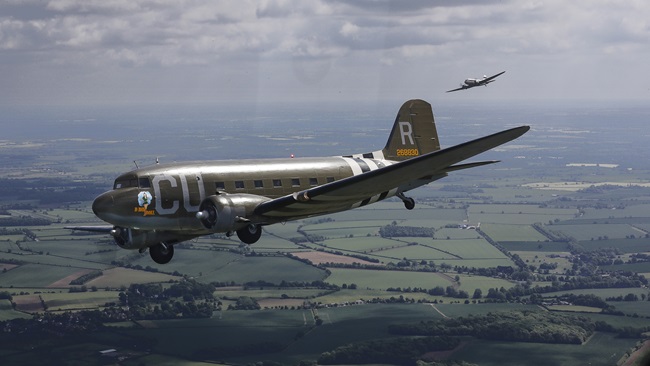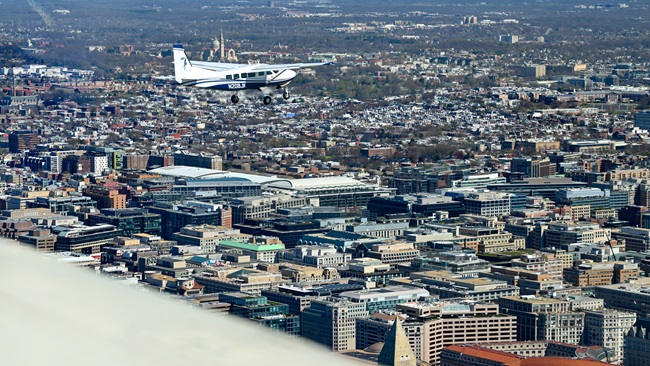Reflections: Oshkosh arrival
A Ripon surprise

I’m talking about a flight right into Oshkosh’s Wittman Regional Airport—at a time when it may well be the busiest in the world. A VFR procedure called the Ripon Transition funnels everything from Cubs to small jets into a line that runs for 15 action-packed miles to the thresholds of Wittman’s runways. I’ve flown it several times. One trip was memorable.
The flight was in a highly modified Piper Navajo with two 350-horsepower engines—the Panther conversion by Colemill Enterprises of Nashville. The pilot in command was in the left seat. I was in the right. Of course, we’d studied the notam before leaving for OSH. And I’d done the Fisk arrival at least four times before. I looked over the notam before takeoff, but I’m not too sure about the pilot.
The Panther conversion is a fire-breather, so we tooled along at 220 knots and 18,000 feet to Oshkosh. The trip lasted maybe a half-hour, and the pilot seemed surprised that we arrived so soon. Maybe that’s because we were so high. We’d only descended to 10,000 feet when ATC turned us loose into an unusually uncontrolled VFR world. The arrival begins at the town of Ripon. The chart said to arrive at Ripon at 1,800 feet, then fly at 90 knots up the railroad tracks to Fisk—another small town—then on toward some strobe lights and a clearance to land at Oshkosh. (A route that called for 135 knots at 2,300 feet was available, but for a reason I can’t recall, we flew “low and slow”). The whole time, you monitor a frequency and listen to the controllers identify your airplane and machine-gun their encouraging words as you fly up the railroad. Meanwhile, you don’t say a word to the controllers. It’s a one-way conversation.
Every once in a while, some pilot will try to pass up a slower airplane and cut into the line. That’s when a controller might send you for a “penalty lap” around Rush Lake.
The left-seater hadn’t ever flown into Oshkosh before—at least, not during AirVenture—and appeared comfortable up at 10,000 feet. I told him we had to get down to 1,800 feet and get to Ripon—fast! He looked down, turned to me and said, “Down there!?”
“Yep,” I said.
During a turn I looked down and saw why he might have been incredulous. There were airplanes everywhere, and all of them were heading to Ripon. This was what the Battle of Britain must have looked like.
Down we went, and back came the power. Our heads were on swivels as we found Ripon, found a space, and got in line. The Panther wasn’t happy. We were flying slow, with gear and flaps down, doing our best to stay around 90 knots, and the deck angle was high. And what was that in front of us?
It was a Volksplane. This is a tiny, single-seat homebuilt with a VW Beetle engine. In a terminal dive it could maybe go 100 knots. Of course, we were gaining on it, even though we were going uncomfortably slow. “I’m not going any slower,” the pilot said. It got tense. Of all things, we didn’t want to crowd the Volksplane and get sent around Rush Lake.
It all worked out in the end—the strobes and runway came into view, and we landed. I should mention that this particular Panther was covered in all manner of stickers and logos because it had won speed records. I thought maybe we’d park at the Basler FBO, but he went down a taxiway, turned into the grass, stood on a brake, and spun the airplane around until it was parked next to another display airplane.
We hopped out. The pilot pulled out a folding chair and a sign from the back of the airplane, set up shop, then said, “Well, guess I’ll head into town and get a room.” He didn’t have a reservation. A couple days later I passed by the Panther during the show and asked him how it was going. “Great. But they told me I have to move the airplane.” Seems he hadn’t arranged for exhibit space, either. But for those two glorious days he enjoyed front-row status on the flight line.
Email t[email protected]
Rotorcraft arrival
 By the time my 2014 trip to Oshkosh came around, I had flown into Wittman field as both a passenger and a pilot. I had flown to Appleton and driven from Milwaukee. I thought I had arrived by every possible method except maybe a bus (not so fun) and seaplane (super fun). Despite seeing the helicopters parked next to EAA’s headquarters on the drive into the show every day, I never considered arriving by rotorcraft. That was until I earned my add-on.
By the time my 2014 trip to Oshkosh came around, I had flown into Wittman field as both a passenger and a pilot. I had flown to Appleton and driven from Milwaukee. I thought I had arrived by every possible method except maybe a bus (not so fun) and seaplane (super fun). Despite seeing the helicopters parked next to EAA’s headquarters on the drive into the show every day, I never considered arriving by rotorcraft. That was until I earned my add-on.
I used to joke with Sporty’s John Zimmerman that he was the cause of my helicopter fling. I had once made a passing mention about wanting to experience vertical flight and he encouraged me to watch the Sporty’s So You Want to Fly Helicopters video. That’s all it took. Zimmerman supported my joyful ramblings during training, and to further cement my love of rotorcraft, offered me the chance to ride along in his Robinson R44 to Oshkosh that year. I jumped on an airliner to Cincinnati where he picked me up, and we were off. The weather was beautiful, the flying low and slow, and the view spectacular. We had to stop short south of Oshkosh to wait for the airshow to finish, and it was there that the beauty of flying a helicopter to Oshkosh came into focus.
Open up the notam for the show and you’ll see detailed instructions for airplanes, complete with dozens of miles of in-trail slow flight, challenging communication protocols, and a sense of building stress as the whole thing congregates into a spot landing in front of 100,000 of your closest friends. Now turn to the helicopter page, as we did. The entire instruction essentialy reads: get the ATIS, monitor the tower, stay out of everyone’s way, land. That’s it. Helicopter flying is always a joy, but after a summer day of flying the upper Midwest in a great aircraft with great company, to then land at the world’s largest aviation gathering without talking to anyone, and walk 20 steps to the road to pick up your ride, was proof that a personal helicopter is the ultimate magic carpet ride. —Ian J. Twombly



